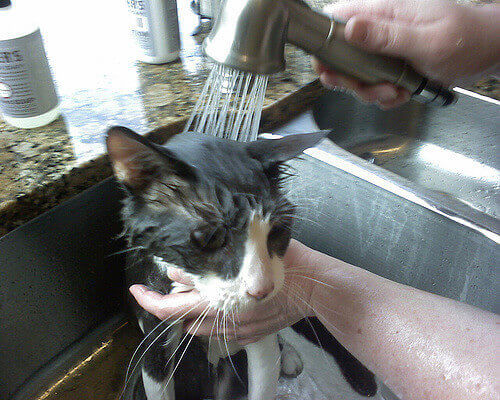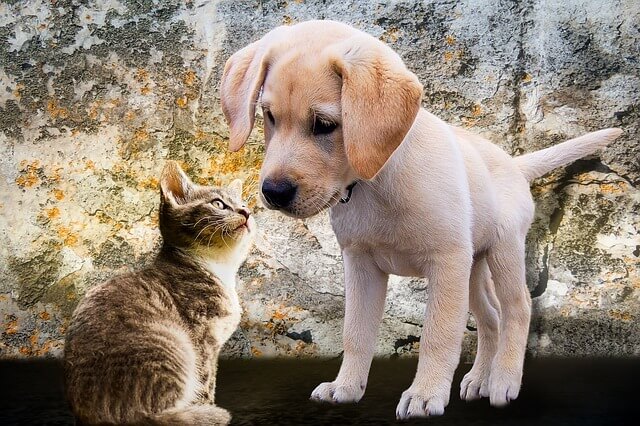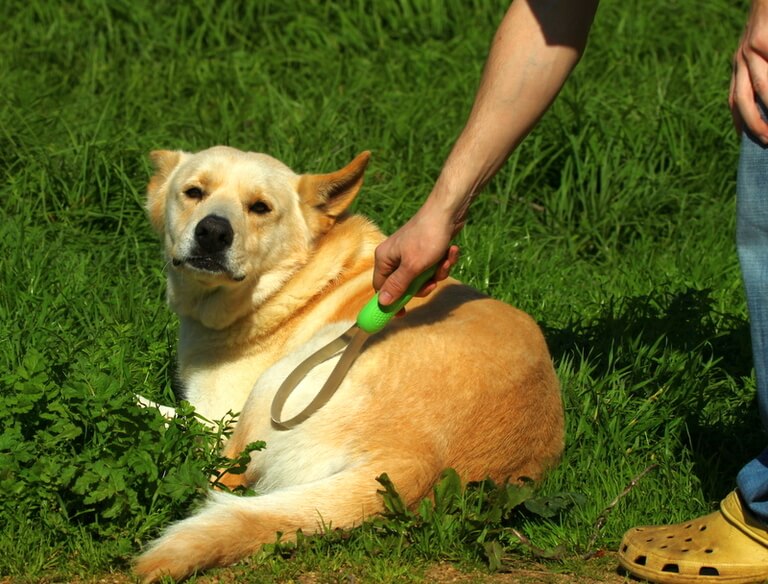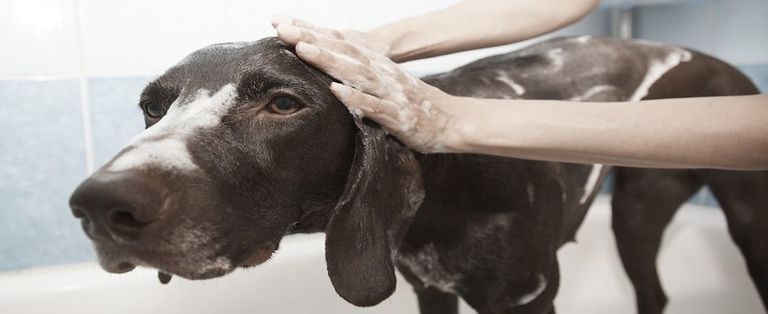Getting Your Pet to Take a Bath
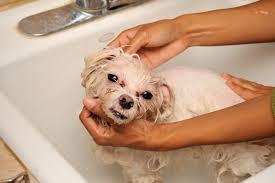 Getting your pet to take a bath sounds like fun doesn’t it? Or, perhaps, this isn’t one of those fun necessary tasks that you look forward to.
Getting your pet to take a bath sounds like fun doesn’t it? Or, perhaps, this isn’t one of those fun necessary tasks that you look forward to.
Oh, the joys of dog ownership. Have you ever noticed how much dogs love to roll around in something nasty and smelly such as cow poop or on a dead bird? Or, how much the site of a muddy puddle is like a magnet for dogs?
These activities are probably exhilarating experiences for your dog, but now you have the dreaded task of getting your pet to take a bath before he can be allowed inside the house. The local car wash may seem like the best option right now, but we all know better. Hosing him down in the backyard is another option, but if the weather is cold, you and your poor dog will freeze. Even if it’s 80 degrees outside, that cold water has to be a “shock” to both you and your dog.
Preparing to Getting Your Pet to Take a Bath
If you’re lucky and your pet is small, then you can just pick him up and bathe him in the kitchen sink or bathtub. Before starting the pet bath, make sure that you have lots of towels available, pet shampoo and conditioner. In the event that your dog is really muddy, it really helps if you can allow the mud to dry some and do a bit of brushing before the bathing process.
This will definitely help reduce the mud factor in your bathroom. After you brush out most of the dried mud from the coat, gently apply some ointment such as artificial tears in your dog’s eyes to prevent any soap from stinging. You can get artificial tears ointment from your local pet supply store or from your vet.
Make sure the water is warm and carefully wet the entire coat. Apply the shampoo and start sudsing him up. Once the shampoo has loosened all the dirt and grime, rinse thoroughly. Make sure to get every bit of the soapy suds off your dog and then apply the conditioner. Some of the pet hair conditioners can be left on the coat, but most of them need to be rinsed off.
Drying Your Dog After a Bath
Now you have a very clean dog, but he is also extremely wet. The majority of pets don’t like hair dryers, so unless yours is already familiar with one, don’t be tempted and decide that this is a good time to try one out on your dog. Use a towel and soak up as much of the excess water from the coat as you can.
If you don’t have your dog in a confined space during this process, be prepared for your dog to go sprinting throughout the house and rubbing his very wet body on any available surface. Unless you want your sofa to become a pet bathing casualty, keep the bathroom door closed or put your dog in a room that has dog proof furnishings, such as a closed in porch.
Of course, if you’re silly enough to let him back outside, he will promptly waste your pet bathing efforts by rolling in the dirtiest area that he can find to take that “clean” smell off.
Bathing Your Pet for Specific Needs
Some pets may occasionally need medicated baths for various skin issues. This type of bath requires a medicated shampoo that typically needs to be left on the coat for a certain period of time before rinsing. If your dog doesn’t like the idea of standing still for several minutes, it may be a good idea to have a leash handy to keep him inside the bath tub for the required period.
If your dog has the unlucky situation of meeting a skunk, the bathing process for deskunking should be handled differently. This is a bath that should absolutely be done outside. You can find a many commercial products available and just as many home remedies for deskunking. Tomato juice doesn’t actually work and it is very messy. A blend of water, hydrogen peroxide, baking soda, and a little Dawn dishwashing liquid is fairly effective in eliminating the skunk odor.
Some people suggest rinsing your dog’s coat with a mouthwash such as Scope. Your dog will have a minty fresh coat when you have finished if Scope is used. Even after deskunking, when it rains and your dog’s coat gets wet, you may still smell a faint “skunky” odor for many weeks.
Bathing Cats is a Different Challenge
Bathing cats is a different matter entirely.
Thank goodness, cats don’t need to be bathed very often. If they could talk, they would stress this fact even when they may need one. Some cats actually like water, but the majority of them have no desire to get wet. If, for some reason, your cat must be bathed, be careful in performing this task. Here’s a video with some tips on how to bathe your cat.
Don’t use a spray attachment from the sink to wet them down. Instead, slowly pour water on them. Before doing this, it is probably wise to request assistance from another person to help with the bathing process. Your once lovable cat will have the attitude of a lion.
Another option is to have a pan of warm soapy water and slowly place your cat in it. This may be somewhat less traumatic than having water poured over her. Have towels ready to dry her off when the bath is done and be prepare to be snubbed by your cat for most of the day.
If you have no desire to bath your pet, you can always call a pet groomer and let them perform this task for you.

